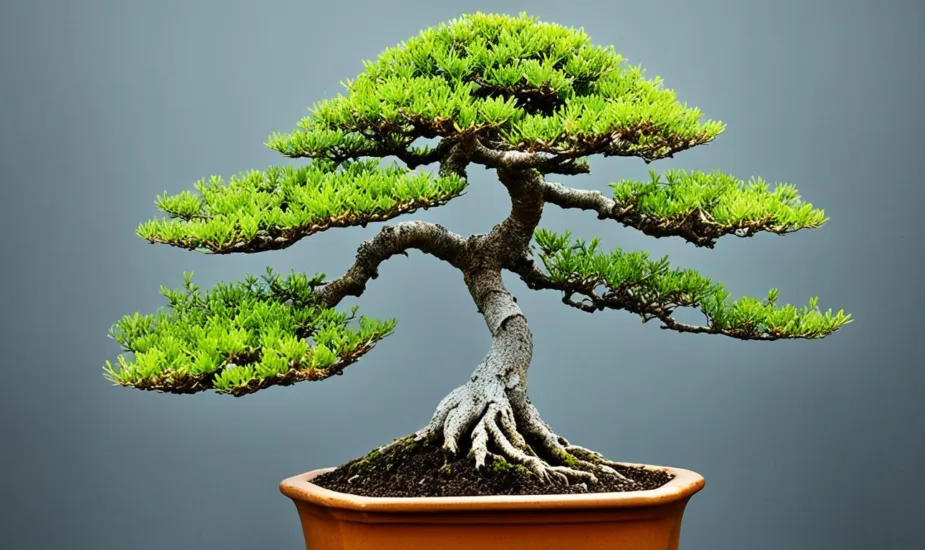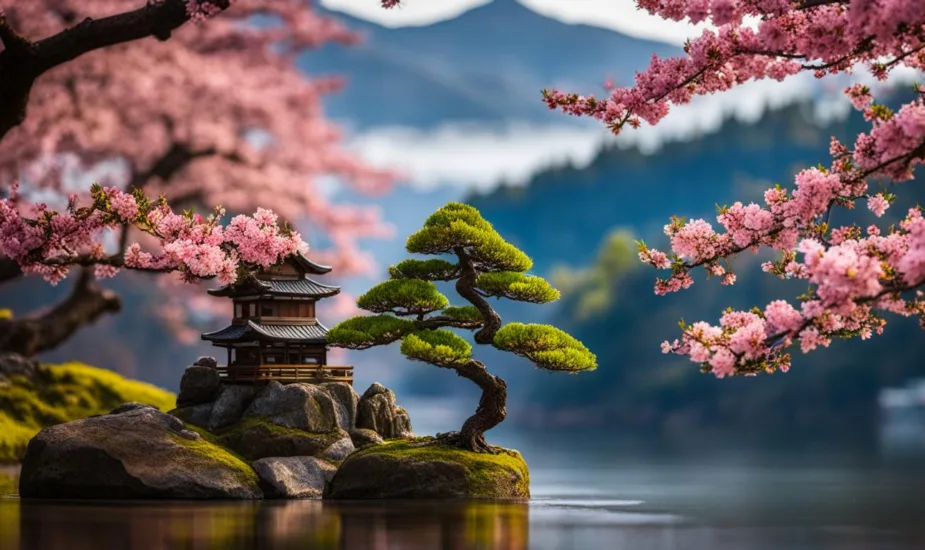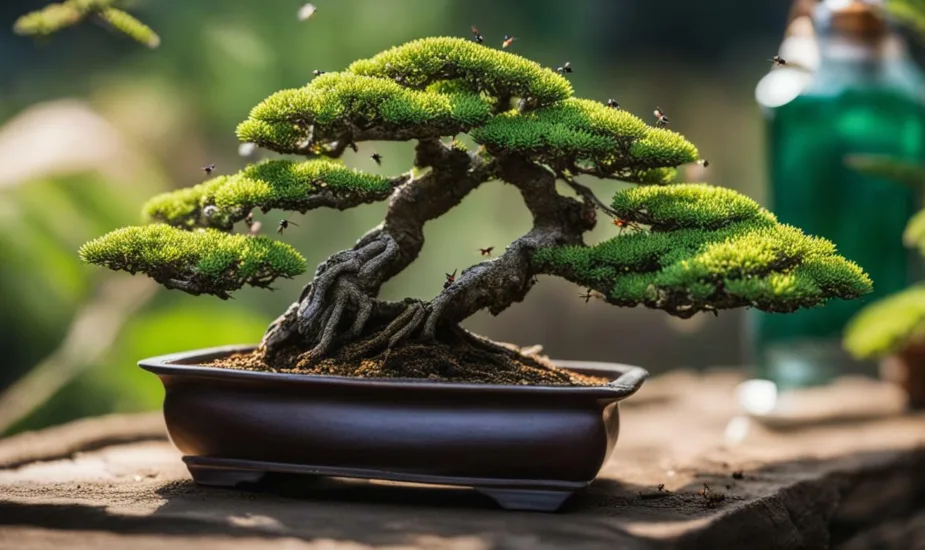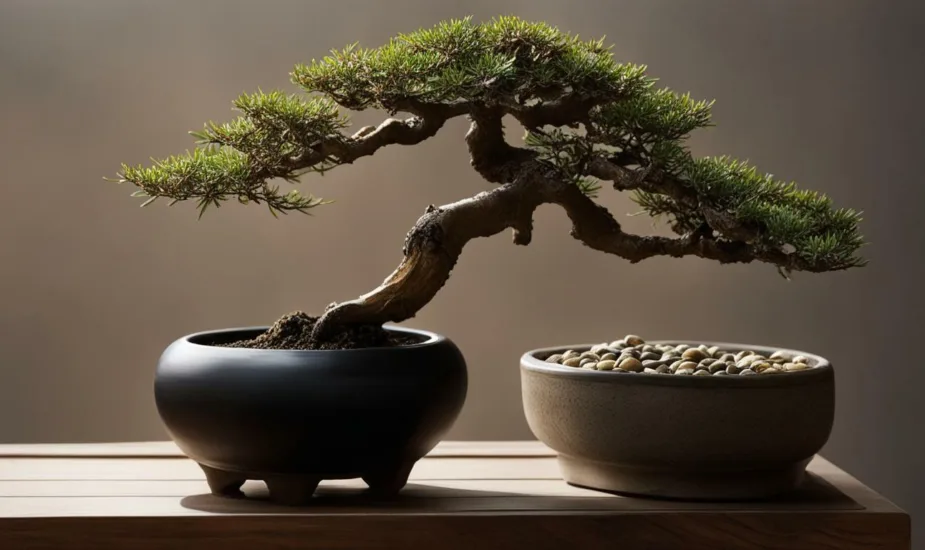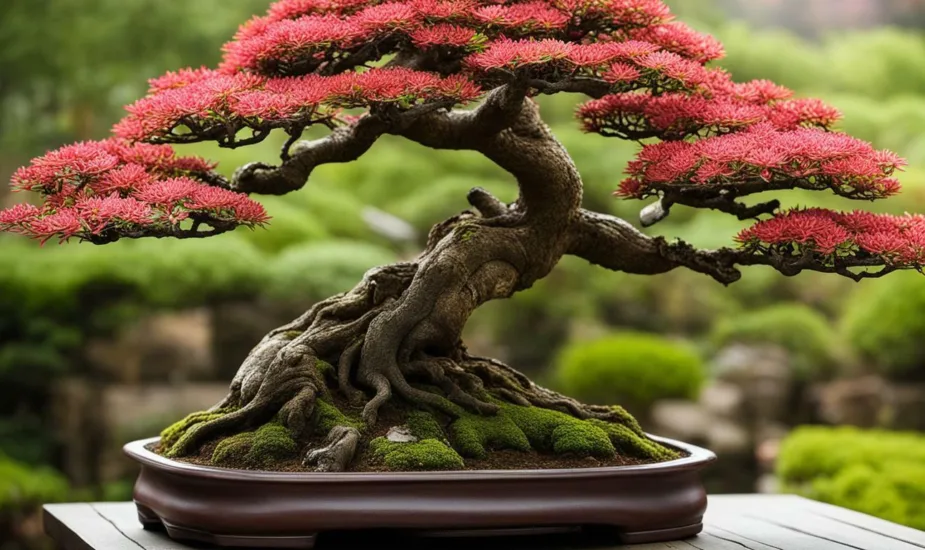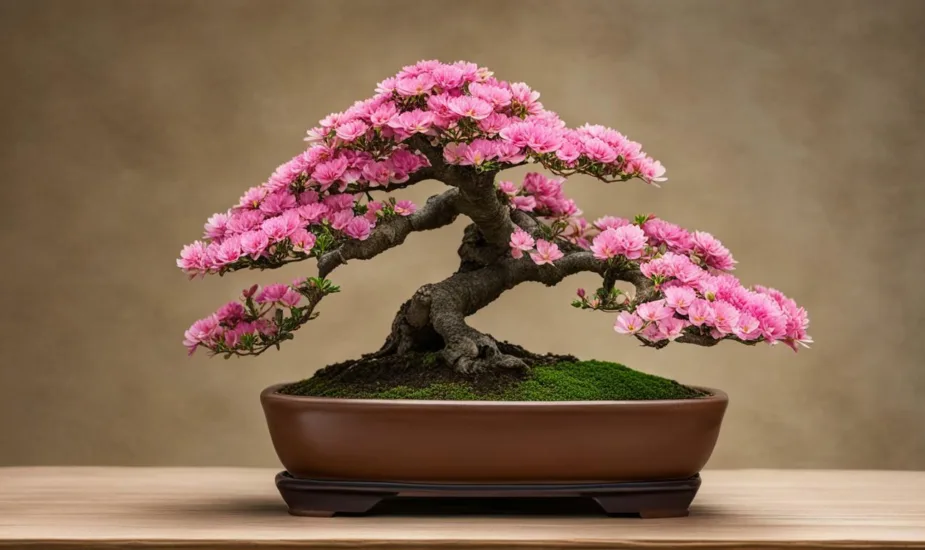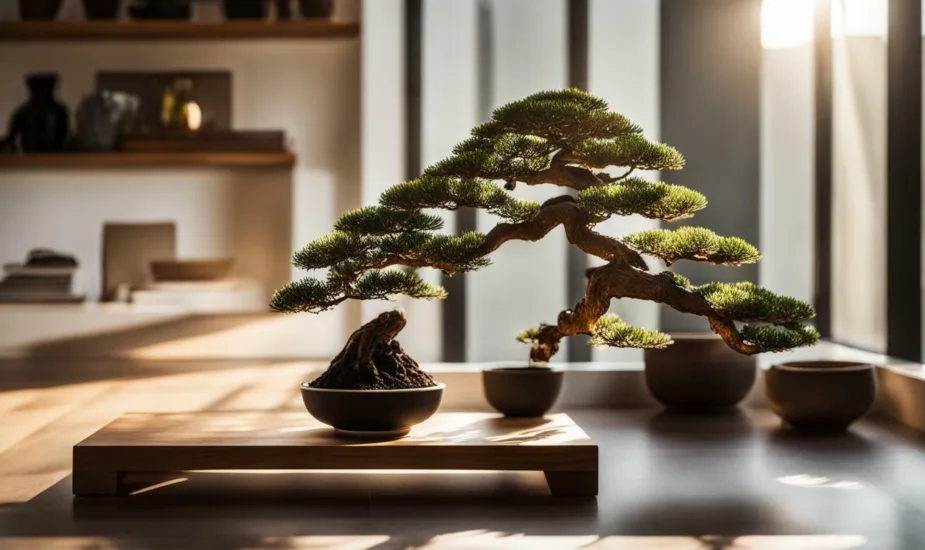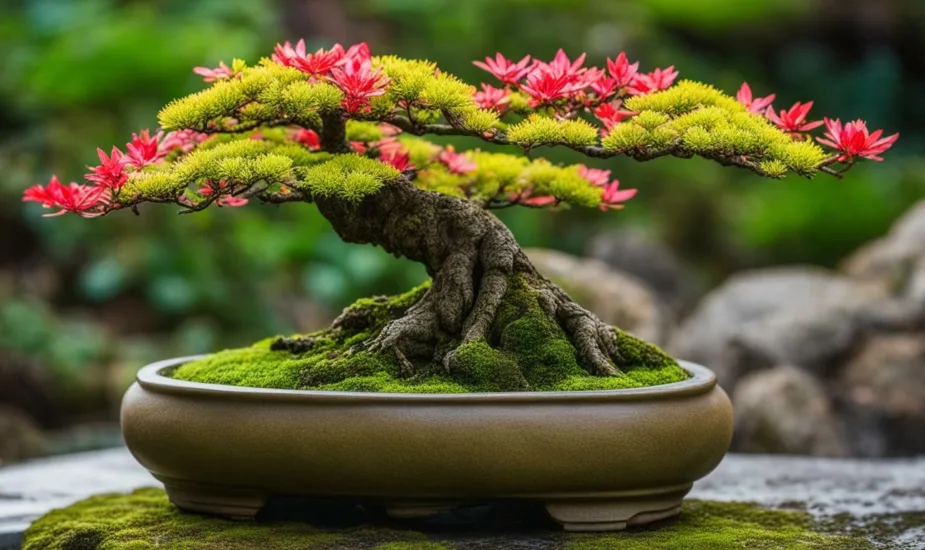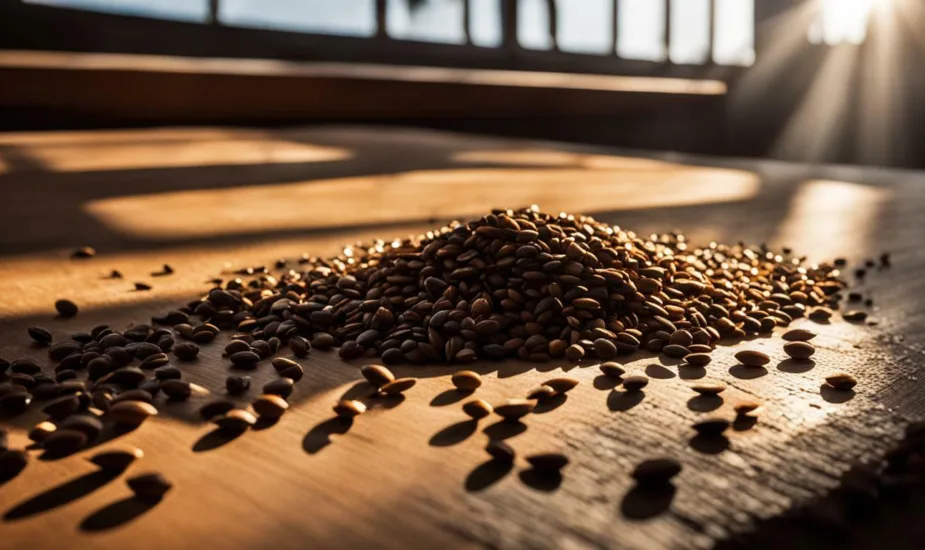Mastering the Miniature: Beginners Trail into Bonsai Trees

Introduction to Bonsai Trees
Welcome to the fascinating world of bonsai trees! In this guide, I will take you on a journey into the miniature world of bonsai and introduce you to the art of nurturing these remarkable living sculptures.
The Fascination of Bonsai
Bonsai trees have captivated people’s imagination for centuries. The art of bonsai originated in China and later spread to Japan, where it flourished and became deeply ingrained in their culture. Bonsai is derived from the Japanese words “bon” meaning tray or pot, and “sai” meaning tree.
What makes bonsai so captivating is the ability to create and maintain a tree that resembles its full-sized counterpart, but in a much smaller form. The meticulous shaping and pruning techniques used in bonsai cultivation result in a tree that embodies the grace, beauty, and harmony of nature. It is an art form that combines horticulture, design, and patience.
Why Bonsai Trees are Perfect for Beginners
While bonsai may seem intimidating to beginners, it is actually an excellent choice for those starting their journey in gardening. Here’s why:
- Size and Space: Bonsai trees are small and compact, making them ideal for individuals with limited space. Whether you live in an apartment or a house with a tiny backyard, you can still enjoy the beauty of a tree in a miniature form.
- Indoor and Outdoor Options: Bonsai trees come in various species, some of which can be grown indoors while others thrive in outdoor environments. This versatility allows you to choose a bonsai tree that suits your living situation and climate. For more information on different bonsai tree species, check out our article on bonsai tree species.
- Learning and Patience: Bonsai cultivation teaches valuable lessons about nature, mindfulness, and patience. As you care for your bonsai tree, you will learn to observe its growth, understand its needs, and develop a deep connection with the living tree in your care. It is a rewarding journey that allows you to develop your horticultural skills and appreciate the beauty of nature on a miniature scale.
To embark on your bonsai journey, it’s important to start with the right knowledge and guidance. In the following sections, we will explore the basics of bonsai tree care, the different types of beginner-friendly bonsai trees, and essential tips for maintaining your bonsai’s health and aesthetics. Let’s dive into the world of bonsai and discover the joy of nurturing these exquisite living sculptures.
Getting Started with Bonsai
If you’re new to the world of bonsai, getting started can be an exciting and fulfilling journey. In this section, I will guide you through the initial steps of choosing the right bonsai tree and acquiring the essential tools for bonsai care.
Choosing the Right Bonsai Tree
When selecting a bonsai tree as a beginner, it’s important to choose a species that is well-suited to your level of experience and the environment in which you intend to grow it. Some bonsai trees are more forgiving and easier to care for, making them ideal for beginners.
Here are a few recommended beginner bonsai trees to consider:
| Bonsai Tree Species | Difficulty Level |
|---|---|
| Juniper Bonsai | Easy |
| Ficus Bonsai | Moderate |
| Chinese Elm Bonsai | Easy |
Juniper bonsai, with its hardy nature and forgiving qualities, is a popular choice among beginners. Ficus bonsai, known for its robust growth and adaptability, is another excellent option. Chinese Elm bonsai, with its small leaves and tolerance for different climates, is also a suitable choice for beginners.
To learn more about different bonsai tree species, check out our article on bonsai tree species.
Essential Tools for Bonsai Care
To care for your bonsai tree properly, there are several essential tools you will need to have on hand. These tools will help you with tasks such as pruning, shaping, and repotting your bonsai.
Here are some essential tools for bonsai care:
- Pruning Shears: Used to trim and shape the branches and foliage of your bonsai tree.
- Concave Branch Cutter: Ideal for removing larger branches while promoting proper healing.
- Bonsai Wire: Used to wrap around branches and shape them into desired positions.
- Root Hook: Helps in gently separating and untangling the roots during repotting.
- Bonsai Soil Scoop: Used for adding and removing soil during repotting.
- Watering Can: Essential for watering your bonsai tree and maintaining proper hydration.
By having these essential tools in your bonsai care kit, you’ll be well-prepared to take care of your bonsai tree. Remember to handle the tools with care and keep them clean and sharp for optimal performance.
For more guidance on caring for your bonsai tree, refer to our article on bonsai tree care.
With the right tree and essential tools in hand, you’re ready to embark on your bonsai journey. As you gain experience and knowledge, you can explore more advanced techniques and expand your collection. Enjoy the process of nurturing and shaping your bonsai tree into a work of art. Happy bonsai gardening!
Bonsai Tree Care Basics
Taking care of bonsai trees requires attention to detail and a deep understanding of their specific needs. In this section, we will cover the basics of watering and humidity, pruning and shaping, as well as soil and fertilizer requirements for healthy bonsai trees.
Watering and Humidity
Proper watering is crucial for the health and survival of bonsai trees. The frequency of watering depends on various factors, including the type of bonsai tree, its size, and the climate. As a general rule, it’s important to check the moisture level of the soil regularly. When the top inch of soil feels dry to the touch, it’s time to water your bonsai.
To ensure thorough watering, water the tree until the water drains out from the drainage holes at the bottom of the pot. This helps to flush out any accumulated salts or minerals that may harm the roots. Avoid overwatering, as it can lead to root rot and other problems. If you’re unsure about the watering needs of your specific bonsai tree species, check out our article on bonsai tree species for more information.
Maintaining proper humidity levels is also important for bonsai trees, especially for those that thrive in humid environments. One way to increase humidity is by placing the bonsai on a humidity tray filled with water or using a room humidifier. Regularly misting the foliage can also help to create a humid microclimate around the tree. However, make sure to avoid over-misting, as excessive moisture can lead to fungal diseases.
Pruning and Shaping
Pruning and shaping are essential techniques for maintaining the desired form and aesthetic appeal of bonsai trees. Regular pruning helps to control the growth, remove dead or damaged branches, and encourage ramification (the development of secondary branches). It’s important to use sharp and clean pruning tools to make precise cuts and minimize the risk of infection.
When pruning, focus on removing any crossing or inward-growing branches that disrupt the overall structure of the tree. Additionally, selective pruning can help create a balanced and visually pleasing composition. To learn more about proper pruning techniques and when to prune specific bonsai tree species, refer to our article on bonsai tree care.
Shaping the bonsai tree involves wiring the branches to guide their growth and create the desired silhouette. This technique requires patience and precision to avoid damaging the tree. It’s important to regularly inspect the wiring to ensure it doesn’t cut into the branches. Once the branches have set in the desired position, the wire should be removed to prevent it from restricting growth.
Soil and Fertilizer
Choosing the right soil and providing proper fertilization are crucial aspects of bonsai tree care. Bonsai trees require well-draining soil that promotes healthy root growth. A common bonsai soil mixture consists of a combination of akadama, pumice, and lava rock. This mixture ensures adequate drainage while retaining the necessary moisture for the tree.
Fertilizing bonsai trees is essential to provide them with the nutrients they need to thrive. Slow-release organic fertilizers or liquid fertilizers specifically formulated for bonsai trees are commonly used. Fertilizing should be done during the growing season, typically from spring to autumn. However, it’s important to follow the specific fertilization guidelines for your bonsai tree species to prevent over-fertilization, which can harm the tree.
By understanding the basics of watering and humidity, pruning and shaping, as well as soil and fertilizer requirements, you can provide the necessary care for your bonsai trees. Remember to always consider the specific needs of your bonsai tree species and adjust your care routine accordingly. For more information on caring for indoor or outdoor bonsai trees, check out our articles on indoor bonsai trees and outdoor bonsai trees.
Common Types of Beginner Bonsai Trees
As a beginner in the world of bonsai, it’s essential to choose the right type of tree that suits your skills and preferences. Here are three common beginner bonsai trees that are known for their adaptability and resilience:
Juniper Bonsai
The Juniper bonsai is a popular choice among beginners due to its hardiness and forgiving nature. This evergreen tree is known for its needle-like foliage and beautiful, rugged bark. Junipers are highly adaptable and can thrive both indoors and outdoors, making them a versatile option for bonsai enthusiasts.
| Common Name | Scientific Name | Indoor/Outdoor |
|---|---|---|
| Juniper Bonsai | Juniperus spp. | Both |
Ficus Bonsai
The Ficus bonsai is another excellent choice for beginners. This tropical tree is known for its glossy, oval-shaped leaves and aerial roots, which add a unique charm to its appearance. Ficus bonsai trees are relatively low-maintenance and can adapt well to different environments, making them suitable for both indoor and outdoor cultivation.
| Common Name | Scientific Name | Indoor/Outdoor |
|---|---|---|
| Ficus Bonsai | Ficus spp. | Both |
Chinese Elm Bonsai
The Chinese Elm bonsai, also known as Ulmus parvifolia, is a favorite among beginners due to its tolerance for a wide range of growing conditions. This deciduous tree features small, serrated leaves that turn vibrant shades of green, red, and orange during the fall season. Chinese Elm bonsai trees can thrive both indoors and outdoors, making them a versatile choice for beginners.
| Common Name | Scientific Name | Indoor/Outdoor |
|---|---|---|
| Chinese Elm Bonsai | Ulmus parvifolia | Both |
When choosing a beginner bonsai tree, it’s important to consider factors such as your gardening experience, available space, and the specific care requirements of each tree species. Researching and understanding the needs of different bonsai tree species can help you make an informed decision. For more information on various bonsai tree species, you can visit our article on bonsai tree species.
Remember that each bonsai tree requires proper care and attention. This includes regular watering, pruning, and providing the right amount of sunlight. To learn more about bonsai tree care, explore our comprehensive guide on bonsai tree care. With patience and dedication, you can successfully nurture and shape your chosen beginner bonsai tree into a beautiful work of art.
Troubleshooting and Maintenance Tips
As a bonsai tree enthusiast, it’s essential to be aware of the common challenges that may arise in caring for your bonsai. In this section, we will explore key troubleshooting and maintenance tips to help you keep your bonsai trees healthy and thriving.
Dealing with Pests and Diseases
Just like any other plant, bonsai trees can be susceptible to pests and diseases. It’s important to regularly inspect your bonsai for any signs of infestation or illness. Common pests that can affect bonsai include aphids, spider mites, and scale insects. To address these issues, you can use organic insecticides or natural remedies like neem oil to control the pests. Be sure to follow the instructions carefully and avoid using harsh chemicals that may harm the tree.
In addition to pests, bonsai trees may also encounter diseases such as root rot or fungal infections. Proper watering techniques and good soil drainage are crucial in preventing these issues. If you notice any signs of disease, it’s important to address them promptly. You may need to adjust your watering routine, improve air circulation around the tree, or apply appropriate fungicides. For more detailed information on bonsai tree care, refer to our article on bonsai tree care.
Repotting and Root Pruning
Repotting is an essential aspect of bonsai tree care, as it allows for root development and prevents the tree from becoming root-bound. Repotting should be done periodically, usually every 1-3 years depending on the growth rate of your bonsai. When repotting, it’s important to gently prune and trim the roots to maintain a healthy root system. This process, known as root pruning, stimulates new growth and enhances the overall health of the tree.
When repotting, make sure to use a well-draining bonsai soil mixture and choose an appropriately sized pot. This will provide the tree with adequate space for root growth and prevent waterlogged conditions. Remember to keep the tree in a shaded area for a few weeks after repotting to allow it to recover from the process.
Winter Care for Bonsai Trees
Winter can be a challenging time for bonsai trees, especially for those that are kept outdoors. Cold temperatures and frost can damage the delicate branches and roots of the tree. It’s important to take precautions to protect your bonsai during the winter months.
One method of protection is to move the bonsai to a sheltered location, such as a garage or a greenhouse. This helps to shield the tree from extreme cold and harsh winds. If the bonsai remains outdoors, you can wrap the pot with insulating material or bury it partially in the ground to protect the roots from freezing temperatures.
During winter, it’s crucial to adjust your watering routine to prevent overwatering. Bonsai trees are dormant during this time, so they require less water compared to the growing season. Be sure to monitor the soil moisture level and water only when necessary.
By addressing pests and diseases, practicing proper repotting techniques, and providing appropriate winter care, you can ensure the longevity and health of your bonsai trees. Remember, each bonsai species may have specific care requirements, so it’s important to research and understand the needs of your particular tree. For more information on different bonsai tree species, visit our article on bonsai tree species.
 Little Garden Tips
Little Garden Tips




